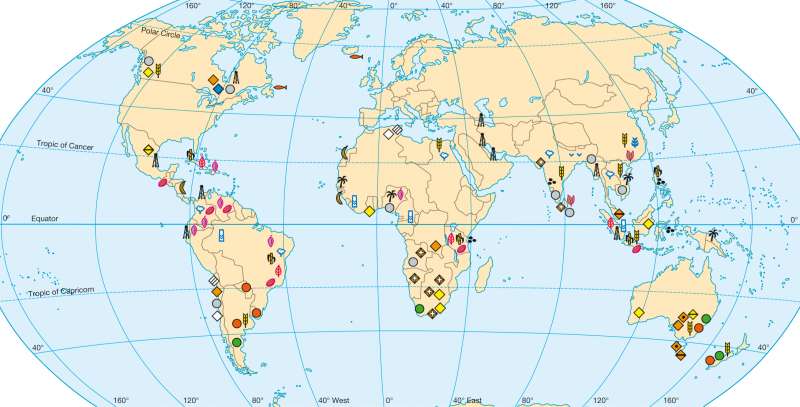Trade goods in the age of imperialism (circa 1914)
The world - The age of imperialism
978-3-14-100790-9 | Page 184 | Ill. 2

Information
The map shows the main trade goods as economic motives for colonisation.Trade goods
The foreign trade of British India is an example of the many exploited colonies. Agricultural products, cotton, jute, opium and tea, made up about 62 percent of exported goods in 1871 and at least 37 percent in 1901. In addition to this, timber and mining products were considered precious. In Africa, coffee, cocoa, cotton, rubber and palm oil were the most important agricultural produce.
Also, there were raw materials of gold, precious stones, copper and potassium nitrate as mineral resources. In Asia, in addition to various agricultural products, spices were particularly coveted. At the beginning of the 20th Century the petroleum resources of Asia also became increasingly the focus of the colonial powers.
M. Felsch; Ü: C. Fleming




